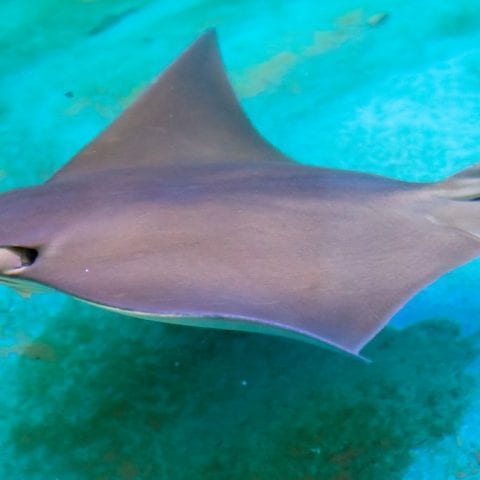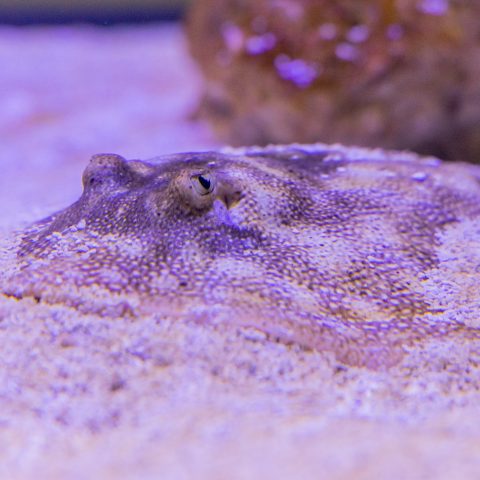Stingrays come in all shapes and sizes. Some can even create enough electric charges to stun a human! Rest assured, you can safely touch or even feed our cownose stingrays at Stingray Beach, or see them swim gracefully underwater at Mavis’s Rescue Hideaway. Learn more about stingray species below.
Where to See
Stingray Species
Cownose Ray

- Status
- Not Threatened
- Average Size
- 11-18 in
- Location
- Atlantic Ocean
- Threats
- Commercial fishing
- Defining Characteristic
- Head extends beyond disk
This stingray has a very broad disk and pointed wings. Its snout is indented in the middle to form two lobes, hence the name ”cownose”. Superficially, it resembles the eagle ray. The eyes are located in front, or anterior to, the beginning of the pectoral fins. It can grow to be seven feet wide and about 100 pounds. It may be seen in large schools in sand flats and mudflats stirring up food on the bottom with its wings, or pectoral fins.





